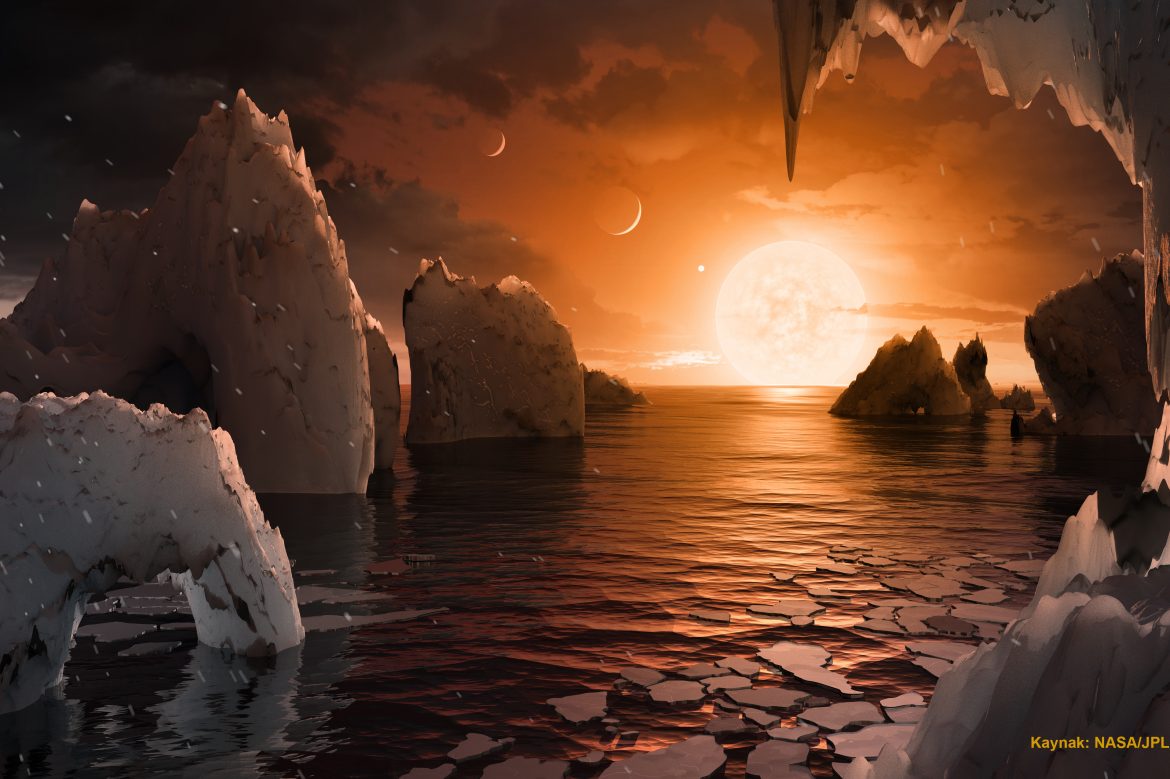
In the Search for “Life”
In the search for extra-terrestrial life, the first reference of astronomers is, naturally, our planet and the conditions adapted by the lifeforms we observe here.
The best candidates for habitable planets are considered the Earth-like ones, small, rocky, with breathable atmospheres and a convenient warmth from their stars.
However, while the astronomers have found a number of promising candidates, such as Trappist-1d or Proxima Centauri b, both orbiting stars relatively close to us, the required conditions are quite stringent and significantly limit the number of suitable planets.
Some planets in the so-called habitable zone, where surface temperatures allow water to be present in liquid form, may be far from being habitable for life, while others outside this designated zone may be home to utterly different forms of life.
Two separate research teams set forth with the aim to reach answers that can redefine how and where in the universe we should look for life, and the concept of a habitable planet. For this purpose, they examined the question of what makes a planet outside the Solar System habitable. Their studies resulted in the identification of an entirely new class of habitable planets that are likely to be significantly more abundant than Earth-like planets and much easier to study.
These new candidates, which they call the “Hycean planets”, are oceanic worlds that are significantly larger than Earth but smaller than Neptune, with an atmosphere rich in hydrogen. The name Hycean itself is a combination of the words hydrogen and ocean. These planets could be up to 2.6 times the size of Earth and up to 10 times as massive, figures that are significantly larger than those of all planets previously thought to be habitable.
Most important of all, they must have surface temperatures to allow the flow of liquid water, similar to Earth in that respect. The thick atmosphere of these planets can keep surface temperatures suitable for liquid water even with little help from their stars, while the ocean can protect everything living inside it from being crushed by atmospheric pressure. Searching for these planets is also easy because they have large sizes and the Hycean habitable zone around their stars is much broader than the habitable zone for terrestrial-like planets.
In case these planets do support life, the important observation criterion is whether they will show detectable biosignatures. Researchers examining this question in detail state that the major Earthly biosignatures such as oxygen, ozone and methane are likely to be produced by processes unrelated to life on Hycean planets. Therefore, the presence of these elements cannot be considered biosignatures for these worlds.
However, metabolic processes on Earth produce a number of secondary compounds that may be more easily detected in atmospheres rich in hydrogen: dimethyl sulphide (DMS), dimethyl disulphide (DMDS), methanethiol (CH3SH), and carbonyl sulphide (OCS).
In this case, the next big step will be taken when the James Webb Space Telescope, which will have the observing power necessary to properly evaluate the atmospheres of distant exoplanets, is in place and starts working in space.
The discovery of a biosignature on a Hycean planet will naturally be transformational, signalling not only the existence of life elsewhere but also in environments very different from our own.[/vc_column_text][/vc_column][/vc_row]
REFERENCES
- 1. https://www.sciencenews.org/article/planet-habitable-new-type-hycean-search-extraterrestrial-life-aliens
- 2. https://astronomy.com/news/2021/09/astronomers-discover-new-class-of-habitable-world
- 3. https://www.newsweek.com/exoplanet-define-habitable-planets-change-paradigm-shift-search-life-1628467
